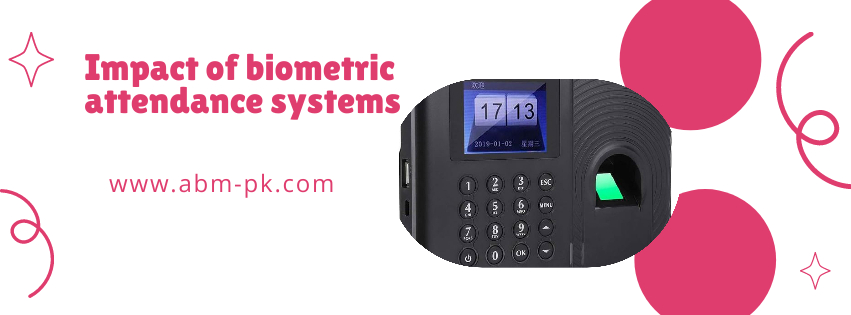Here’s an article about the impact of biometric attendance systems on employee productivity and job satisfaction, formatted as a listicle with a conversational tone, high keyword density, and SEO optimization:
The impact of biometric attendance systems on employee productivity and job satisfaction Let’s talk about biometric attendance systems. These systems use unique biological traits like fingerprints, facial recognition, or iris scans to track employee attendance. they’re gaining popularity because they’re more accurate and secure than traditional methods like manual sign-in sheets or punch cards.
But how do biometric attendance systems actually impact employee productivity and job satisfaction? That’s a great question! Here’s the deal: By eliminating buddy punching (where one employee clocks in for another), these systems ensure accurate time tracking. This leads to: Improved accountability: Employees are more responsible for their own time, reducing tardiness and absenteeism. Fairer payroll: Everyone gets paid for the hours they actually work, which boosts morale and reduces disputes.
Reduced administrative burden: Say goodbye to manual time-consuming tasks like data entry and payroll processing.6 Biometric systems automate these processes, freeing up HR and management time for more strategic tasks. Enhanced security: Biometric data is unique to each individual, making it extremely difficult to falsify. This improves workplace security by preventing unauthorized access.
Increased employee satisfaction: While some employees might initially be hesitant about the use of biometrics, the benefits often outweigh the initial concerns.

Here’s why impact of biometric attendance systems:
Fairness: Accurate time tracking ensures everyone is treated fairly, boosting employee morale. Transparency: Employees can easily see their own attendance records, promoting transparency and trust. Improved work-life balance: By accurately tracking hours, employees can better manage their time and avoid burnout. However, it’s important to address potential concerns. Privacy: Employees may have concerns about the privacy of their biometric data. Data security: Companies must implement robust security measures to protect employee data from breaches.
Technical issues: Technical glitches can sometimes cause delays and frustration for employees. Cost: Implementing a biometric system can have an initial cost associated with hardware, software, and integration. Despite these potential challenges, the benefits of biometric attendance systems often outweigh the drawbacks. When implemented and managed effectively, they can significantly improve employee productivity, job satisfaction, and overall workplace efficiency.
Are biometric attendance systems accurate? Yes, impact of biometric attendance systems are generally very accurate due to the unique nature of biological traits. Are my biometric data safe? Companies have a legal and ethical obligation to protect employee data. Robust security measures, such as encryption and access controls, must be implemented.16
How do biometric software impact employee privacy? Companies should have clear policies regarding data collection, use, and storage to address employee privacy concerns. What are the costs associated with implementing a biometric system? Costs can vary depending on the type of system, number of employees, and other factors.17
This article provides a comprehensive overview of the impact of biometric attendance systems on employee productivity and job satisfaction. By addressing key concerns and highlighting the benefits, it aims to provide valuable insights for businesses considering implementing these systems.
Note: This is just a starting point. We can further enhance this article by: Adding specific examples of how biometric systems have improved productivity in different industries. Including case studies of companies that have successfully implemented impact of biometric attendance systems. Discussing the latest advancements in biometric technology, such as behavioral biometrics. Providing more detailed information on data security and privacy best practices. I’m describing here for our next prompt!
Biometric attendance systems have become increasingly popular in the workplace as a means of accurately tracking employee attendance and time worked. These systems use unique biological characteristics, such as fingerprints or facial recognition, to identify individuals and record their time of arrival and departure. The implementation of biometric attendance systems has had a significant impact on employees in various industries. On one hand, these systems provide a more efficient and reliable method of tracking employee time, reducing the possibility of errors or fraud. Employees no longer have to worry about clocking in or out for their shifts, as the system automatically records their attendance.
However, the use of biometric attendance systems has also raised concerns among employees regarding privacy and data security. Some employees may feel uncomfortable with the idea of their biometric information being stored and used by their employer. There is also the risk of potential data breaches or misuse of this sensitive information. Employers must take steps to ensure that their biometric attendance systems are secure and compliant with data protection regulations in order to protect the privacy and rights of their employees.
Despite these potential drawbacks, the overall impact of biometric attendance systems on employees is largely positive. These systems help to streamline time tracking processes, improve accuracy, and ultimately increase productivity in the workplace. By eliminating the need for manual entry or paper-based attendance records, employees can spend less time on administrative tasks and more time on their core responsibilities. In conclusion, while the adoption of biometric attendance systems may pose challenges in terms of privacy and security, the benefits they offer in terms of efficiency and accuracy make them a valuable tool for employers and employees alike.
The impact of biometric attendance systems on employee productivity and job satisfaction is a topic of growing interest in the modern workplace. As organizations strive to optimize their operations and enhance employee performance, these advanced systems have emerged as a powerful tool. Let’s explore the various ways biometric attendance systems are reshaping the work environment and influencing employee attitudes.
1. Improved Accuracy and Efficiency
Biometric attendance systems significantly enhance the accuracy of time tracking. By eliminating manual processes, these systems reduce errors and save time for both employees and HR departments. This increased efficiency allows employees to focus more on their actual work, potentially boosting productivity. The automation of attendance tracking can lead to a 30% increase in efficiency related to attendance tracking and payroll processing.
2. Enhanced Accountability
Biometric systems create a culture of accountability among employees. Real-time data capture on work hours, overtime, and leaves improves transparency. This increased visibility motivates employees to be more punctual and manage their time wisely. Studies show that companies using biometric systems for attendance management can reduce time theft by up to 20%.
3. Streamlined Payroll Processing
The integration of biometric attendance systems with payroll software simplifies wage calculations. Accurate time tracking ensures employees are paid correctly for their work hours and overtime. This accuracy in payroll can lead to increased job satisfaction as employees feel fairly compensated.
4. Reduced Time Theft
Biometric systems effectively eliminate “buddy punching” and other forms of time theft. This can result in significant cost savings for companies, with some businesses reducing time theft by up to 50%. Fair and accurate time tracking creates a more equitable work environment, potentially improving overall job satisfaction.
5. Increased Security
Biometric attendance systems offer superior access control security compared to traditional methods. They limit access to secure areas, ensuring only authorized personnel can enter. This enhanced security can create a safer work environment, contributing to employee peace of mind.
6. Flexible Work Arrangements
Cloud-based biometric systems enable better management of flexible work schedules. Employees can clock in and out from various locations, supporting remote work options. This real time database flexibility can lead to improved employee work-load balance and increased job done on time satisfaction.
7. Data-Driven Decision Making
Comprehensive reporting features in biometric systems provide valuable insights. Biometric Built-in ML AI Integrations managers can analyze workforce productivity and make informed decisions about resource allocation. This data-driven approach can lead to more efficient operations and potentially higher employee satisfaction.
8. Reduced Administrative Burden
Biometric attendance systems automate many HR tasks, reducing the administrative workload. This allows HR professionals to focus on more strategic initiatives that can benefit employees. The reduction in paperwork and manual processes can lead to a more streamlined work environment.
9. Fair Recognition of Effort
These systems accurately track work hours, including overtime. This enables managers to fairly recognize and reward employees who put in extra effort. Fair recognition can boost morale and job satisfaction among employees.
10. Improved Time Management
Biometric systems provide employees with a clear record of their work hours. This visibility can help employees better manage their time and maintain a healthy work-life balance. Improved time management can lead to reduced stress and increased job satisfaction.
Conclusion
The impact of biometric attendance systems on employee productivity and job satisfaction is multifaceted and largely positive. These systems offer numerous benefits, from increased accuracy and efficiency to enhanced security and fair recognition of employee efforts. However, it’s important to note that the implementation of such systems should be done thoughtfully, with clear communication to employees about the benefits and privacy considerations.
While 88% of participants in one study agreed with the installation of biometric attendance systems, there are potential downsides to consider[1]. Some employees may experience increased stress related to time and attendance monitoring, and there could be concerns about privacy and trust[1]. Therefore, organizations should strive to balance the benefits of biometric systems with impact of biometric attendance systems strategies to maintain a positive work culture and address any employee concerns.
Overall, when implemented correctly, impact of biometric attendance systems have the potential to significantly enhance workplace productivity, streamline operations, and contribute to a fair and transparent work environment. This, in turn, can lead https://accesscontroldubai.com to improved job satisfaction for many employees who appreciate the accuracy, efficiency, and fairness these systems bring to their work lives.


Pingback: Biometric Built-in ML AI integrations
Pingback: Face Attendance Machine Suppliers in Dubai
Pingback: Deepseek Effect on Biometric Attendance
Pingback: Why biometric attendance necessary
Pingback: Multi Modal Biometric AI Authentication
Pingback: Fingerprint V/S AI Face Recognition